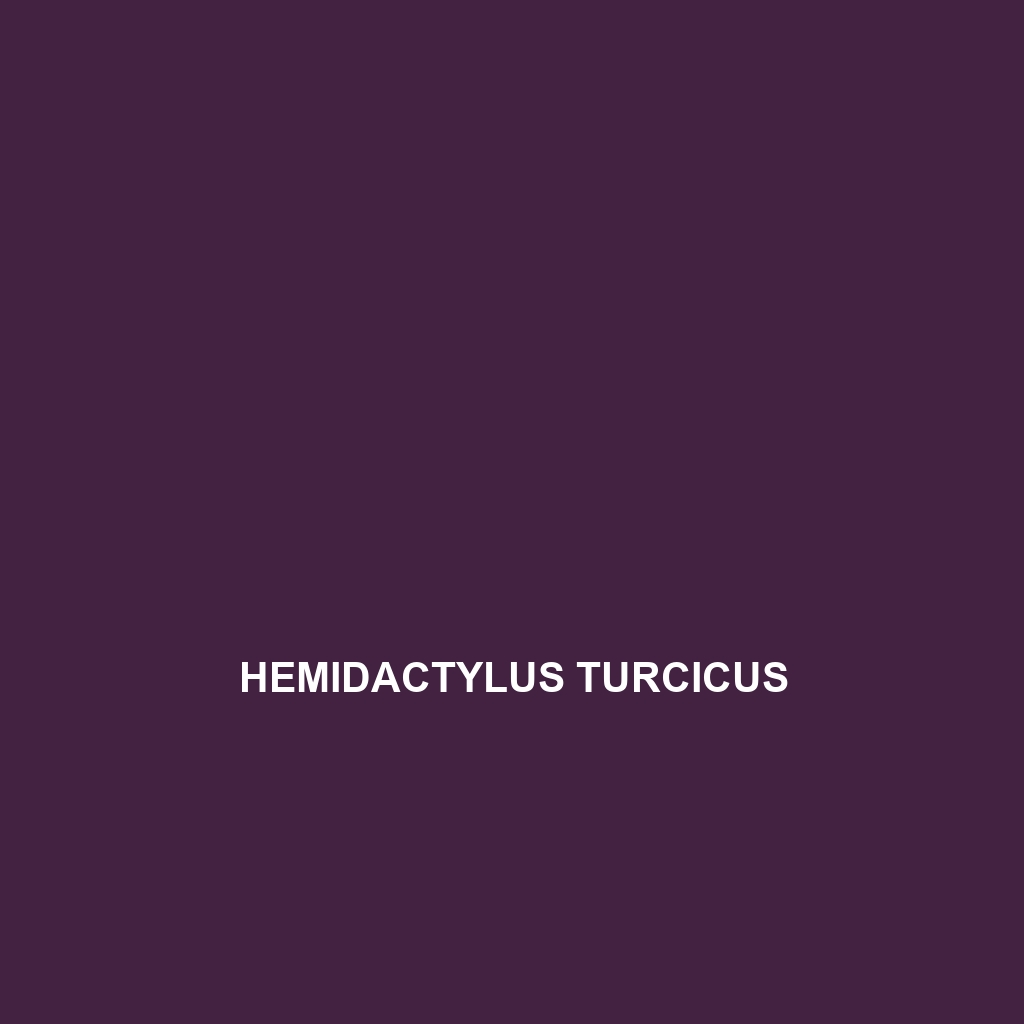Common Name
Hemidactylus turcicus
Scientific Name
Hemidactylus turcicus
Habitat
Hemidactylus turcicus, commonly known as the Mediterranean house gecko, is primarily found across a variety of habitats in regions including the Mediterranean basin, parts of Africa, the Middle East, and southern Asia. This gecko thrives in urban environments, commonly inhabiting human-made structures such as houses, walls, and villages. It is well adapted to warmer climates, favoring sunny, dry areas that provide ample access to shelter and insects. Additionally, Hemidactylus turcicus can be found in temperate forests and savannas, where it takes advantage of rocky crevices or bark to hide during the day, showcasing its adaptability to different environmental conditions.
Physical Characteristics
Hemidactylus turcicus is a small to medium-sized gecko, typically measuring between 6 to 10 inches in length. Its body is flattened, allowing it to easily maneuver through narrow spaces. The skin is usually a pale gray or brown, covered with darker spots or bands that provide excellent camouflage against its surroundings. One of its distinctive features is the enlarged, translucent pad on its toes, enabling it to climb smooth surfaces effortlessly. This species shows sexual dimorphism, with males generally being slightly larger than females and possessing more pronounced pre-anal and femoral pores.
Behavior
Known for its nocturnal behavior, Hemidactylus turcicus is most active at night when it ventures out to hunt for insects and other small invertebrates. Socially, they can be seen in groups, especially in resource-rich areas. Mating rituals often take place during the warmer months, with males displaying territorial behaviors characterized by vocalizations and posturing to attract females. Their adaptability to urban environments allows them to thrive in social settings, often sharing the same nesting sites without aggressive interactions.
Diet
Hemidactylus turcicus is primarily an insectivore, feeding on a diverse diet consisting of insects such as flies, moths, and beetles. Its diet can extend to spiders and other small arthropods, making it beneficial for controlling pest populations in urban settings. This gecko possesses an excellent sense of sight and can catch its prey with quick, agile movements. Occasionally, they may also consume fruits or nectar, indicating some level of omnivorous behavior, although insects remain the primary food source.
Reproduction
The reproductive cycle of Hemidactylus turcicus generally begins in the warmer months, with mating occurring in spring or summer. Female geckos lay 1 to 2 eggs per clutch, tending to lay multiple clutches in a single season. The eggs are typically laid in hidden locations to protect them from predators. After an incubation period of about 60 days, hatchlings emerge, ranging in length from 2 to 4 inches. Parental care is minimal, as hatchlings are independent shortly after birth. Males often compete for females during the mating season, exhibiting various displays to assert dominance.
Conservation Status
Hemidactylus turcicus is currently classified as being of least concern by the International Union for Conservation of Nature (IUCN), indicating that it is not currently facing significant threats of extinction. Its adaptability to urban environments and ability to thrive in various habitats contribute to its stable population. However, local habitat destruction and pesticides can pose risks, necessitating ongoing monitoring to ensure long-term survival.
Interesting Facts
One fascinating aspect of Hemidactylus turcicus is its ability to vocalize, producing a series of clicks and barks, often used for communication during mating. Furthermore, this species exhibits a unique adaptation known as autotomy; if threatened, it can shed its tail to escape predators, allowing it to survive in precarious situations. The tail can regenerate over time, although the new tail may differ in appearance. Additionally, the Mediterranean house gecko plays a critical role in folklore and culture in various regions, often symbolizing good luck or protection.
Role in Ecosystem
Hemidactylus turcicus serves a vital role in its ecosystem as both predator and prey. By regulating insect populations, it contributes to pest control, making it an essential player in maintaining the balance of local ecosystems. As a food source for birds, small mammals, and larger reptiles, it is an integral part of the food web. Its adaptation to different habitats and its resilience in urban settings demonstrate its important ecological role, effectively contributing to the biodiversity of both natural and man-made environments.
